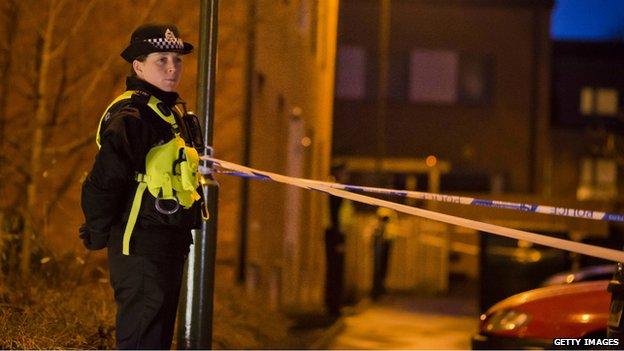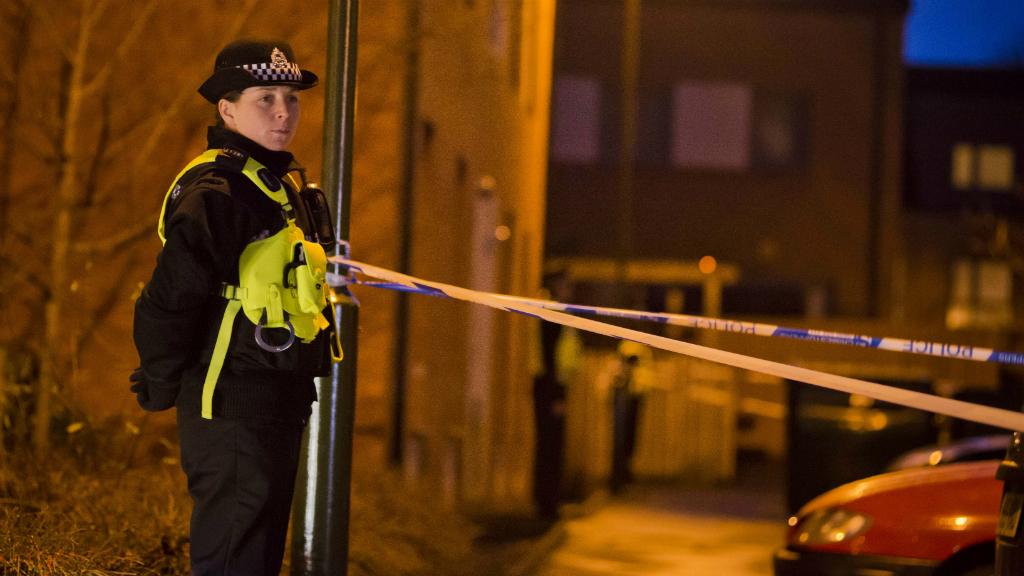Why are there fewer killings in Scotland?
- Published

There were fewer murders and culpable homicide killings in Scotland last year than at any time since the current method of recording the figures began in 1980.
The fall in homicides in this year's statistics - down to 61 killings - continues a fairly sustained drop in homicides since about the mid-1990s, and reflects a bigger trend in falling violence in Scotland over the past three decades.
This declining pattern of violence has been mirrored in other parts the UK, Europe and worldwide - and, although comparative analysis is difficult, it appears likely that rates of homicide in Scotland have fallen more sharply than many other countries.
The current homicide rate in Scotland is around 11 per 1,000,000 people, which is slightly below the most recent figure for England and Wales of 12 per 1,000,000 people published two years ago.
The profile of homicides has also changed, with a greater proportion of incidents taking place in or around domestic dwellings, and a smaller proportion occurring on the streets.
However, some things have not changed - homicide is still largely committed by men against men, knives or sharp weapons are still the major cause of homicides in Scotland, and alcohol still features strongly in homicide cases.

The reasons for this fall in homicides are not entirely clear but we can be reasonably certain that it is a mixture of both global and local factors.
At the global level, the international fall in violence has been linked to a number of factors, including smarter policing practices, increased use of imprisonment, changes in drug markets and reductions in lead in petrol.
There is also evidence to suggest that it is linked to falls in other forms of offending, especially crimes of dishonesty such as motor vehicle and household thefts, which are due to improved security measures.
Simply put, those who don't get involved in these types of 'debut crimes' don't then go on to develop violent profiles.
However, there are also likely to be many factors local to Scotland that have helped to reduce violent crime.

This includes intelligence-based policing strategies, which would include special operations on knife-carrying and targeted use of stop-and-search in high violence areas.
But also the impact of the Violence Reduction Unit and its strong focus on education and prevention among at-risk individuals, families and communities, and the work of campaigning organisations such as No Knives Better Lives.
Even so, work by the Applied Quantitative Methods Network in Scotland has shown that, while crime has fallen in most parts of Scotland, high crime areas have largely remained high crime areas.
This is also reflected in the homicide statistics, where the city of Glasgow continues have by far the highest rates.
Evidence suggests that Scotland has seen a dramatic and sustained fall in offending among young people and this may also have impacted on the homicide statistics.
In the past 10 years, the number of children referred to the Children's Reporter on offence grounds has fallen by about 80% and the number of young people aged under 21 proceeded against in Scottish courts has fallen by about 50%.
There has been a distinctive shift in youth justice practices which are helping to divert young people away from a life of crime, and evidence from the Edinburgh Study of Youth Transitions and Crime shows that the longer you do this, the less likely they are to end up in prison.
The homicide statistics appear to reflect this shift in the age profile, since for the past two years there have been no male accused under the age of 16 and no female accused under the age of 21.
- Published9 December 2014
